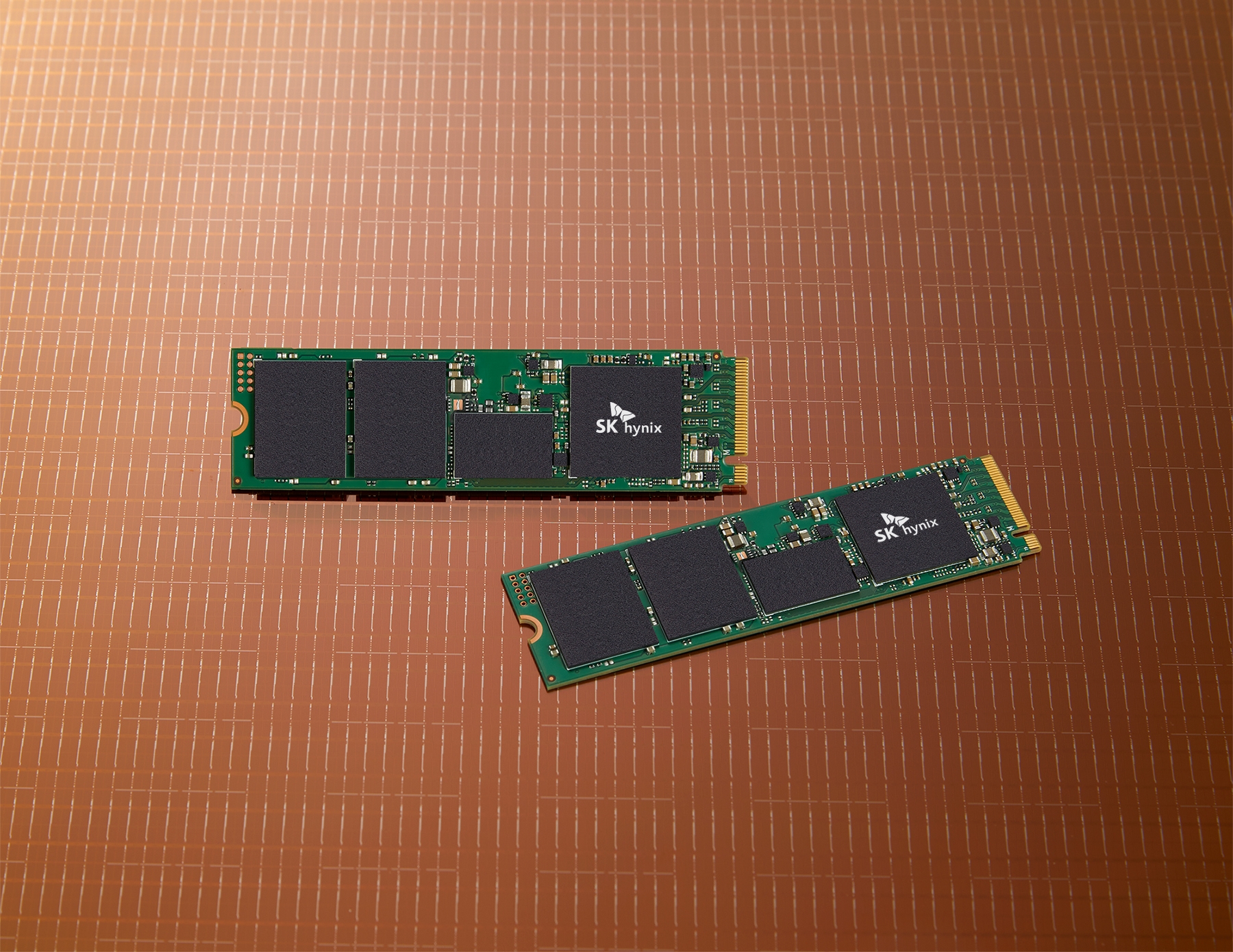SK hynix Starts Mass Production of Speedy, 238-Layer NAND
The new memory promises speeds of up to 2,400 MT/s.

SK hynix said late on Wednesday that it had begun mass production of its 238-layer "4D" (actually a form of 3D) NAND memory devices that promise to enable high-performance and high-capacity SSDs. The new chips boast a 2400 MT/s data transfer rate and could be used to power the next generation of best SSDs, high-speed models what will featuring a PCIe 5.0 x4 interfaces and offer sequential read/write speed of 12 GB/s and higher.
From a performance PC enthusiast's point of view, the key advantage of SK hynix's 238-layer TLC NAND IC is its interface speed of 2400 MT/s. This represents a 50% increase over prior generation and is something that is needed to build SSDs with sequential read/write speeds of 12 GB/s and higher as 3D NAND devices with a 1600 MT/s interface cannot enable transfer rates to saturate a PCIe Gen5 x4 interface.
SK hynix's first 238-layer 3D NAND device is a 512Gb (64GB) 3D TLC device that has a 34% higher manufacturing efficiency than a comparable device fabricated on the company's 176-layer 3D NAND node, the company said. Assuming that yields of the 238L TLC NAND IC are high, it will significantly — by up to 34% — decrease bit costs and therefore increase the device's cost competitiveness. In addition to being smaller than predecessors, the new devices are said to reduce power consumption during reads by 21%, which is a benefit for mobile PCs as well as smartphones.
Typical for SK hynix, the 238-layer NAND device sports a charge trap flash (CTF) design, and it employs the company's proprietary peripheral under cells (PUC) layout, a feature the manufacturer labels as '4D' NAND. This particular layout allows for a reduction in the size of the memory devices, thus facilitating further cost reduction for SK Hynix's NAND.
SK hynix plans to use the new 238-layer memory for smartphones first and then expand its usage across portfolio of other products.
"SK hynix has developed solution products for smartphones and client SSDs which are used as PC storage devices, adopting the 238-layer NAND technology, and has moved into mass production in May," a statement by the company reads. "Given that the company secured world-class competitiveness in price, performance and quality for both 238-layer NAND and the previous generation 176-layer NAND, we expect these products to drive earnings improvement in the second half of the year."
Get Tom's Hardware's best news and in-depth reviews, straight to your inbox.

Anton Shilov is a contributing writer at Tom’s Hardware. Over the past couple of decades, he has covered everything from CPUs and GPUs to supercomputers and from modern process technologies and latest fab tools to high-tech industry trends.
-
domih I'm no expert, but beyond size, sequential speed and reduced power consumption, one can wonder about latency, endurance, random I/O and how it will perform once integrated, depending on DRAM cache speed and size (and optional capacitor for flushing if power goes out), as well as driver brand and type. Finally, are we going to see 8, 10,12 or 16 TB SSD models at reasonable prices?Reply -
atomicWAR Reply
We can hope! I for one would love some larger capacity ssd drives at an affordable price.domih said:Finally, are we going to see 8, 10,12 or 16 TB SSD models at reasonable prices? -
hydro01 I thinReply
I think this also depends on how Hynix is going to treat these nands. If they somehow limit these chips to PCIe 5.0 drives I don't think it will be cheap, as in the case of Micron's 232-layer nands. But if somebody else do pair those nand with an 4 channel HMB controller with 2400MT/s interface (like IG5220 and MAP1602, and TeneFe 2201 in future) then it's very possible to see cheap 4TB ssds at least, as in the case of YMTC 232-layer nands in China. The prices of 4TB MAP1602+YMTC 232-layer ssds are crazy there, as low as about $160 AFTER tax.atomicWAR said:We can hope! I for one would love some larger capacity ssd drives at an affordable price.